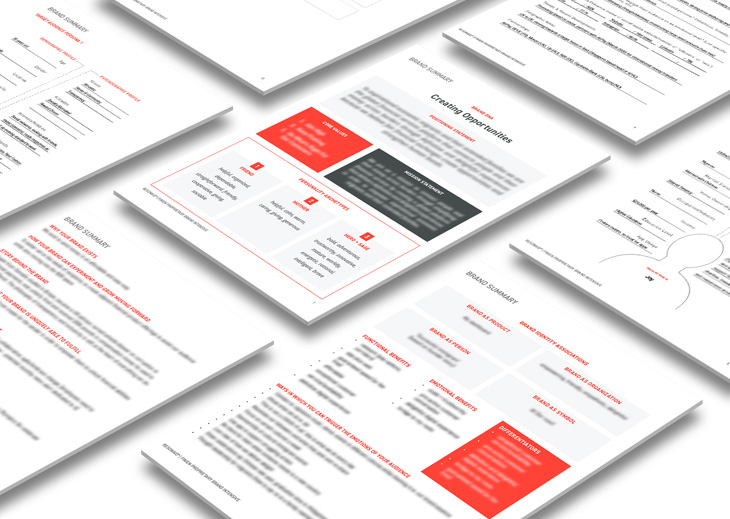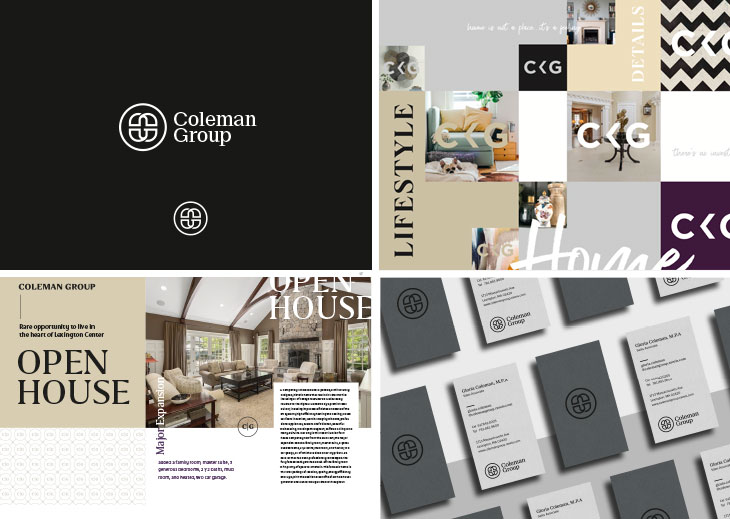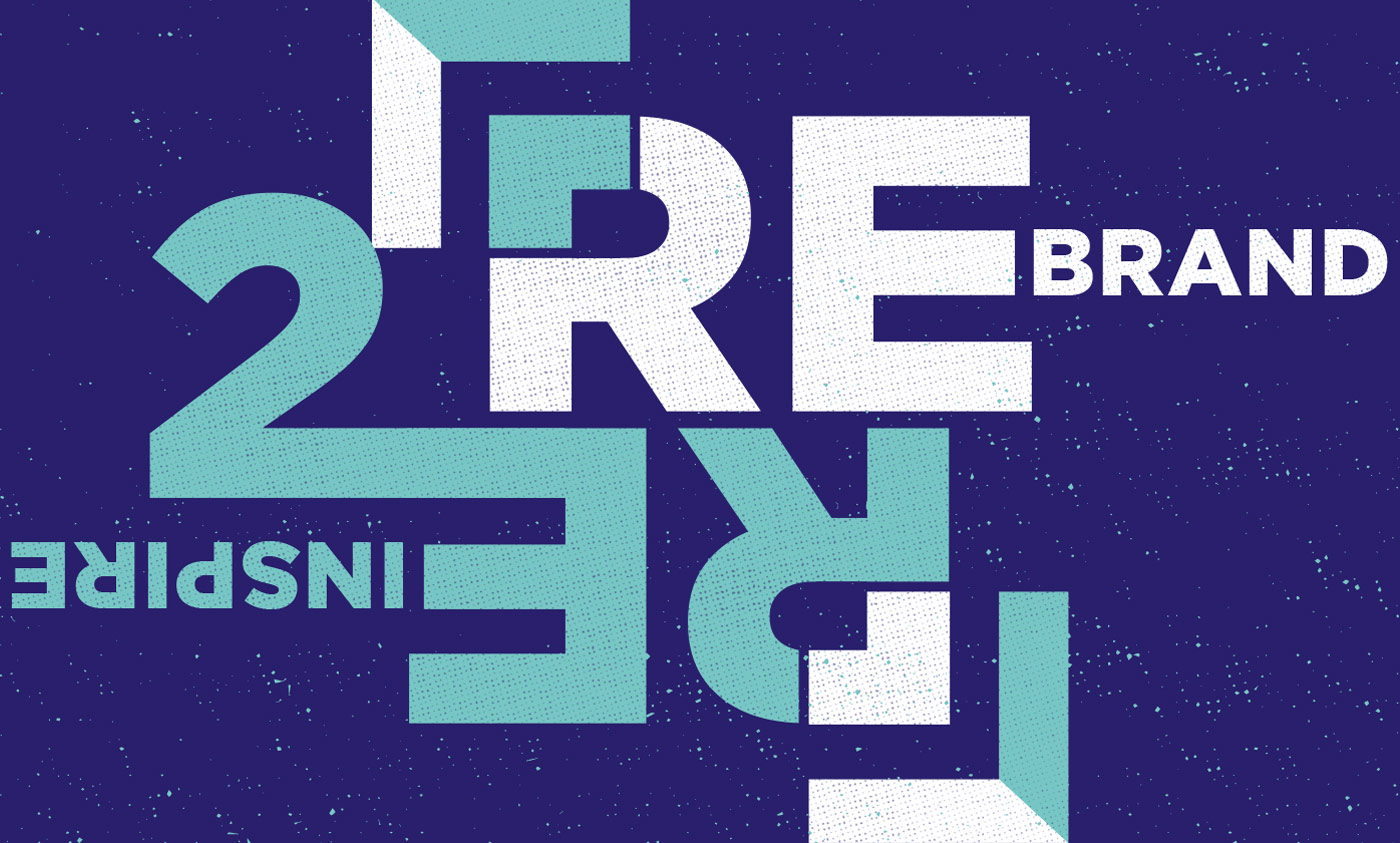Successful Design is a Process
Strategy is key
After twenty plus years of branding hundreds of companies we have become firm believers in establishing a solid strategy before starting the design process. A discovery workshop brings together the client’s brain trust to ensure that the client is aligned on project goals, and gain a deeper understanding of their business and the marketplace around them. These collaborative strategy workshops define an ideal customer and work on things like positioning and key messaging, ultimately producing an outtake document that charts the path for all creative execution moving forward. This clear understanding of their customer, culture, and competition gives us the criteria from which to work, and always helps avoid catering to the whims of personal preferences and biases of the brain trust. Its important to take the time to do this upfront work and there are a few options to consider depending on your specific situation; timing, budget, self-starter DIYer, and involved decision makers.

Design
Our design conceptualization process takes place across the span of roughly two weeks. The first few days, we generally start sketching ideas before we jump on to the computer. Simple sketches give us creative freedom to unload a lot of ideas in a brainstorming session that is not restricted by computer software. Our designers start to recognize ideas with potential for moving forward, while at the same time discarding weaker concepts. As we move forward, concepts that have strong potential are compiled and set aside on our digital paste board awaiting our internal review. During our review all the proposed concepts are discussed and the thinking behind each one is revealed. The discussion and scrutinizing debates are focused on the merits of each design and how they adhere to the outtake document that has been previously established in the strategy phase. This specificity allows us to make decisions on what will make the cut and what will not, which often can become a difficult part of the process, as we begin removing concepts that might be visually striking or of technical and artistic merit, but don’t fit the overall strategy. The end result is a concentrated selection of the few very best concepts that will be presented to our client. After these internal reviews, we compile our chosen designs and create a final client presentation which consists of numerous pages dedicated to each design concept outlining the proposed design with pages dedicated to our thoughts behind the design, possible color palettes, typography, and practical mockups of the logo in use. This allows the client to see the logo in context to allow them to gain a sense of how the identity can be a springboard for their brand as it moves beyond just the logo or mark, and establishes a complete visual identity both online and in print.

Decisions, decisions
After the initial client presentation, we discuss with the client the proposed concepts to see what resonated with them and get overall impressions on the designs and how it aligns with the target persona. At this point we are looking to make clear decisions on a chosen concept to move forward with and get feedback on their preferred designs, gather additional input on modifications and tweaking as we move forward. Our next rounds of refinement generally address modifications and tweaks to the designs as well as color and typography explorations as we look to finalize the logo.

Final Rollout
Once the logo, typography, and colors are set and approved the design process concludes. The logo is generally the first creative step in the development of the overall brand and we continue on with the brand identity system that follows a similar process. Upon the completion of the logo, we supply our clients with a brand guidelines document, sometimes referred to as a brand manual or style guide, which outlines key components of the design. This generally includes correct usage of; the logo variations, color breakdowns, typography, and other aspects of the overall identity. We also supply our clients with a package of logo files that they would need for future use for print and online uses.
A new logo or refresh might seem like an unnecessary expense, but in the long-term, it’s a worthwhile investment. As your brand, reputation, and team continues to grow, customers begin to trust you and the products or services you offer. Brand loyalty is one of the most sought-after traits within business. A well-designed visual identity is a first step in establishing trust with a potential client and/or loyalty with existing ones. Often under-estimated is what it can do to invigorate your team in the near-term while also ultimately adding to the line item in a company’s P&L known as Goodwill.
Build a solid brand, build a solid company
When the risk of getting left behind by competitors who are building a strong brand is greater than the risk of the status quo, it certainly can motivate a company to invest in upgrading their brand identity. The companies that understand that building a solid brand is essential for building a solid company are the ones that will endure the test of time and all market conditions. Choose your branding partner wisely and ensure that they can help deliver; a sound strategy, high level of creative and technical execution across all mediums, and support your sales and marketing objectives going forward.
